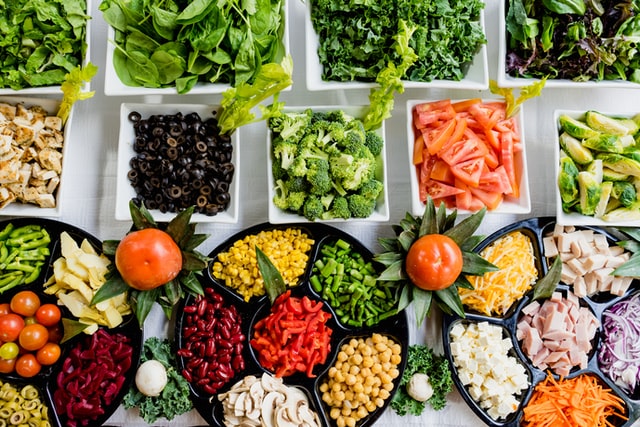
Everybody knows that veggies are good for you. But can you eat vegetables on keto? Yes, you can. Actually, you must! When following a low-carb, high-fat ketogenic diet, it’s essential to incorporate a wide variety of vegetables to get the vitamins and minerals your body needs. But it’s equally important to know the high-carb veggies that can sneak up and push you over your daily limit. Restricting carbohydrates is the key to keto as it enables your body to burn fat for fuel, also known as ketosis.
Best vegetables for keto
In simple terms, keto-friendly vegetables are low in carbohydrates.
Experienced ketoers often talk about cruciferous, non-starchy, or above-ground veggies because these characteristics also point to low-carb vegetables that are good for keto. But it’s not necessary to know these specific terms. The easy rule of thumb is to look up the carb count for each food. Aim for 5 grams of net carbs per serving or less.
Or even easier: choose from this list of keto-approved veggies:
- Artichoke
- Arugula
- Asparagus
- Avocado*
- Bell pepper*
- Bok choy
- Broccoli
- Brussels sprouts
- Cabbage
- Cauliflower
- Celery
- Collard greens
- Cucumber*
- Eggplant*
- Green beans*
- Kale
- Lettuce
- Mushrooms
- Mustard greens
- Olives*
- Radishes
- Spinach
- Swiss chard
- Tomatoes*
- Turnip greens
- Watercress
- Zucchini*
*These are technically fruits (yes, really!), but more importantly, they are keto-friendly.
But just because a food is low in carbohydrates doesn’t mean that you can eat it by the truckload. This list of keto vegetables on PlanKetogenic gives net carb counts and recommended serving size so you know how much to eat of each food without falling out of ketosis.
For the overachievers out there, keep in mind that it’s not all about how low you can go with your carb count. Even though celery has fewer carbs than spinach, that doesn’t mean you should chomp on celery all day every day.
It’s important to eat different types of vegetables because each will provide a unique combination of nutrients. Plus, your taste buds won’t get bored, helping you to stay motivated and feel happy with your diet plan.
Speaking of nutrients, leafy green vegetables are especially beneficial for your health, so be sure to eat these on a weekly (or better yet, daily) basis.
Keto leafy greens:
- Arugula
- Bok choy
- Cabbage
- Collard greens
- Kale
- Lettuce
- Mustard greens
- Spinach
- Swiss chard
- Turnip greens
- Watercress
Worst vegetables for keto. There are certain vegetables to avoid on a ketogenic diet because they have too many carbs and can kick you out of ketosis.
Non-keto vegetables include:
- Cassava
- Corn
- Potatoes
- Sweet potatoes
- Yams
How to eat vegetables on a ketogenic diet
Now that you know what vegetables to eat on keto, it’s time to think about how to prepare them.
Easy ways to have keto veggies:
- Raw
- Baked or roasted
- Grilled
- Sautéed
- Steamed
- Boiled
You can buy them:
- Fresh (best option)
- Frozen
- Canned
- Jarred
- Pickled
- Fermented
Why not serve them:
- With a dip made from plain Greek yogurt or other keto-friendly dairy products
- In a salad
- Topped with extra virgin olive oil
- On a cauliflower-base pizza
- In a zucchini zoodle pasta
- Alongside meat, poultry, or fish
Try them in a recipe:
- Mushrooms stuffed with bacon and cream cheese
- Spinach artichoke dip
- Eggplant lasagna
- Stuffed bell peppers
Do you count carbs from vegetables on keto?
Yes, it is important to count the carbohydrates in all the food you eat. Remember that to calculate net carbs, you take the total carb amount and subtract the fiber.
H2 Why do a ketogenic diet?
Most people shift to this way of eating in order to lose weight. But it can also help you eliminate or greatly reduce your intake of ultra-processed foods. (Harvard Health Publishing explains why to consider this.)
Following a keto lifestyle encourages you not only to read nutrition labels critically but better yet, to prepare your own meals using natural foods that aren’t sold in packages.












